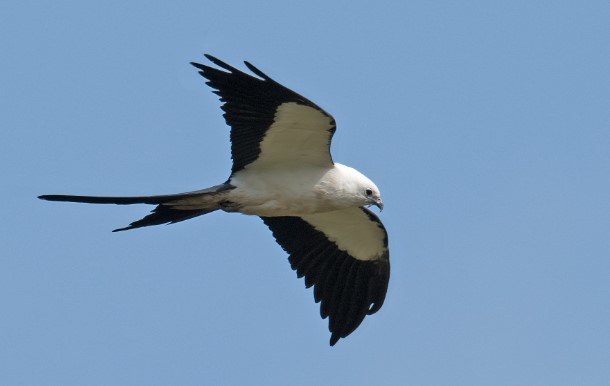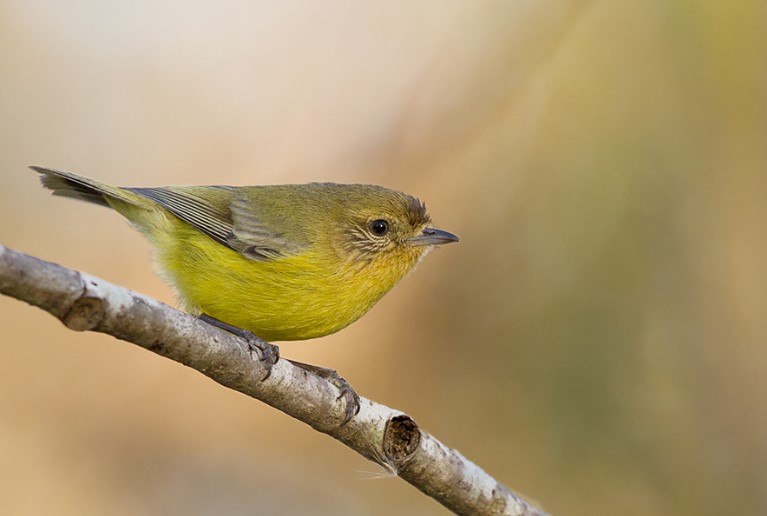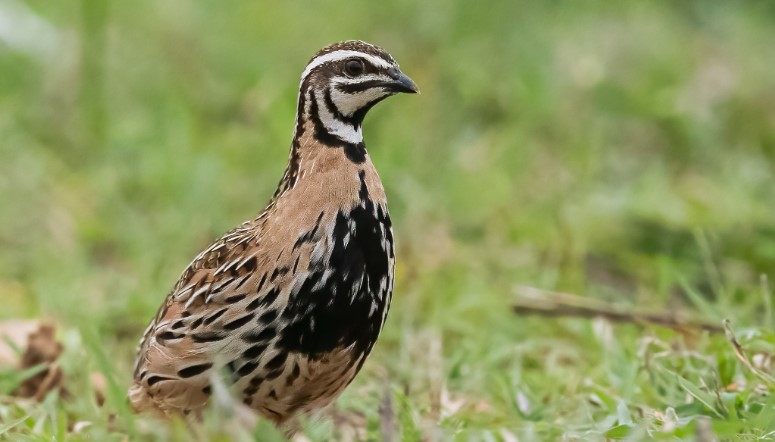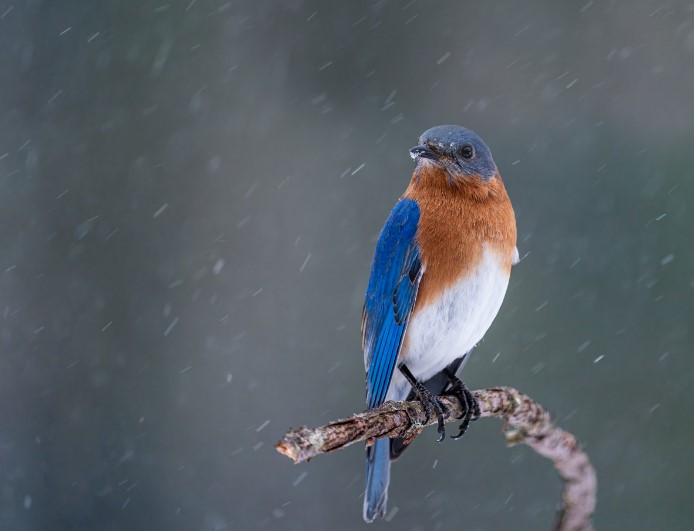Small Birds with Long Tails
Have you ever been captivated by the mesmerizing world of avian creatures? We have something special for you if that’s the case! The dazzling colors, graceful flight, and fascinating behaviors abound in the world of small birds with long tails. Whether it’s the glowing blue plumage of the Splendid Fairywren or the aerial prowess of the Swallow-tailed Kite, each species in the avian kingdom offers only one of its kind spectacle.
There is nothing quite like the beauty and charm of these small birds with long tails, whether you are a skilled birdwatcher or just beginning to explore nature’s wonders. Grab your binoculars and explore these feathered marvels in the great outdoors. It’s time for you to discover how intricately detailed their plumage is, and how elegantly long their tails are.
These avian wonders will surely capture your imagination with their enchanting plumage and graceful flight. We’re going to explore the vibrant world of 10 small, long-tailed birds in this blog post. Let’s go exploring with our binoculars!
1. The Splendid Fairywren:
The splendid fairywren is one of Australia’s most dazzling birds. Splendid Fairywrens are beautiful with their blue feathers and long, flowing tails. The males of this Australian endemic bird display stunning breeding plumage. While flitting through the dense vegetation of their habitat, their long tails add a touch of elegance. They are sedentary, maintaining a territory year-round, and live in small groups with helpers to tend to their nests. Males also molt between nuptial and breeding colors. They all assist in defending nests and territories.
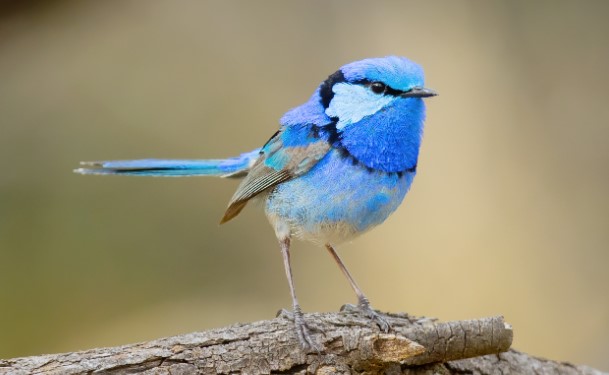
2. The Long-tailed Tit:
There is something elegant about this fluffy ball of fluff. Long-tailed Tits, despite their name, have a long, slender tail, making them beautiful birds. Soft pink plumage and fluffy appearance distinguish this European and Asian species. Providing warmth and protection for their young, they move in flocks and build elaborate nests resembling cozy balls of moss.
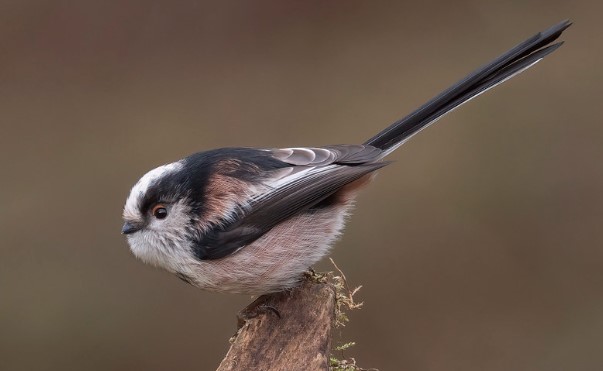
3. The Scissor-tailed Flycatcher:
There is nothing more marvelous than an aerial acrobat like this bird. Scissor-tailed Flycatchers are mostly found in North and Central America, where their tail feathers are approximately twice as long as their bodies. They balance during flight and display during courtship by using these feathery streamers. A true spectacle in the sky, this bird performs acrobatic maneuvers and has distinctive plumage. Females’ tails are up to 30 percent shorter than males’ at maturity. Its wingspan is 15 cm and its weight is up to 43 g. The tail of an immature bird is shorter and duller, whereas the tail of mature birds is longer.
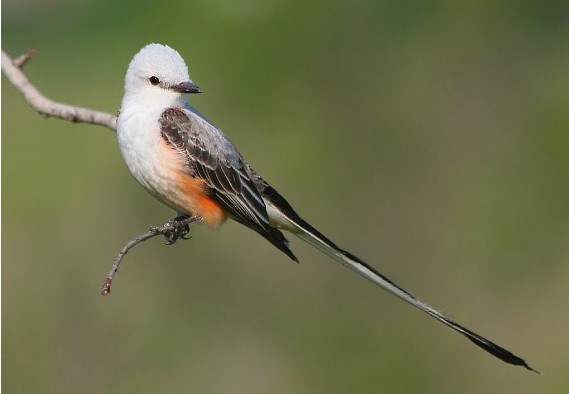
4. The Black-billed Magpie:
There is something intelligent and charismatic about this black-billed magpie. This charismatic bird is found across North America and Eurasia and is characterized by its long, rounded tail. Bird enthusiasts are captivated by this intelligent avian creature’s bold black-and-white plumage and mimicry. Studying a species like this is intriguing since it is capable of solving puzzles and displaying complex behaviors. Black-billed Magpie sitting in the shade of the trees, the magpie avoided heat stress at all times. However when metabolic heat production had to increase, that selective pressure favored physiological adaptation to cold.

5. The Long-tailed Paradise Whydah:
It is an extravagantly plumed wonder bird. During its breeding season, the Paradise Whydah (Vidua paradisaea), which originates from Africa, exhibits an elongated tail. In order to attract mates, males put on a dazzling display of flowing black feathers. In the wild, their magnificent plumage and melodious songs make them a sight to behold. This long-tailed bird is also known as the eastern paradise whydah. These whydahs live in bushed grassland around cultivation in grasslands, savannas, and open woodlands. These whydahs primarily avoid surface water. When the rains come, the whydahs feed on seeds of cultivated fonio, which is known as “acha” or “hungry rice”, which also happens to be the first food source available to humans.
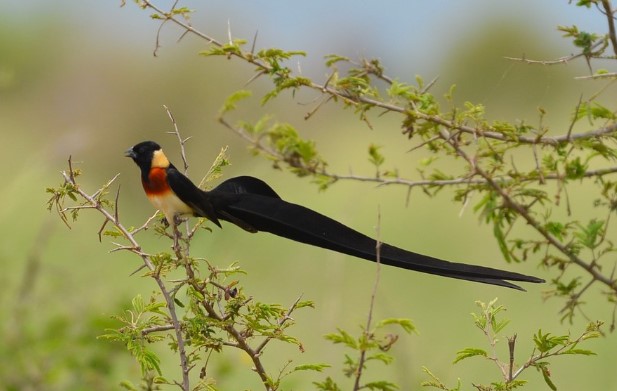
6. The White-throated Fantail:
White-throated Fantails (Rhipidura albicollis) are tiny birds with disproportionately long, elegantly fanning tails that prefer tropical regions of Southeast Asia. A delight to watch is its rapid and agile movements in mid-air while capturing insects. As a bird of the forest, it is truly a gem with its distinctive black and white plumage. Every year, birds repeat the same song with small changes, resulting in a very different sound after four to five years. Birds can be detected and identified by their calls.
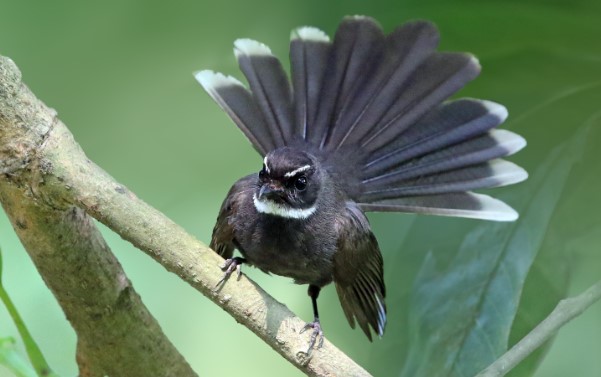
7. African-paradise flycatcher
This medium-sized passerine bird is known as the African paradise flycatcher (Terpsiphone viridis). A male’s two central tail feathers extend into streamers that are often twice as long as his body. There are no streamers on the female tail feathers, which are of moderate length. Birds feed mainly on insects. Usually, two to three eggs are laid in a cup nest. African paradise flycatchers can be found in most countries south of the Sahara Desert, as well as the Arabian Peninsula. It is typically found in savannah woodland, open grassland with isolated trees, plantations, open woodlands, and scrublands.

8. The Spangled Drongo:
There is something mysterious about the spangled drongo. An Australian and Southeast Asian native, the Spangled Drongo is characterized by its long, forked tail, which is often seen spread in flight dramatically. This bird possesses a mysterious air with its glossy black plumage and piercing red eyes. The ability of the bird to mimic various sounds, including those of other birds, makes it attractive to many people.
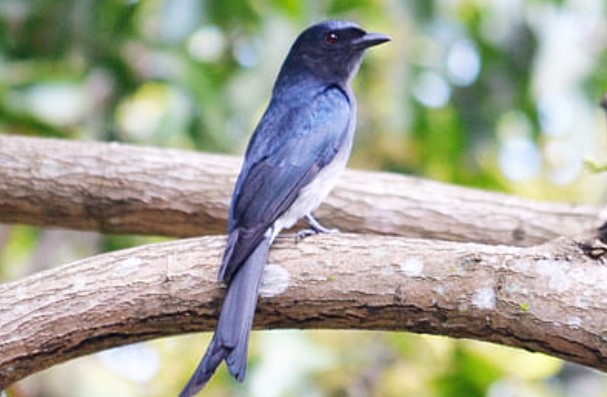
9. The Fork-tailed Sunbird:
This fort-tailed sunbird is one of nature’s masterpieces. An elongated, deeply forked tail distinguishes the Fork-tailed Sunbird from other birds of Southeast Asia. Through their enchanting courtship displays, males adorn their bodies with a variety of vibrant feather shades, often purple, green, and gold. There is no doubt that the beauty of nature can be seen in these avian artists.
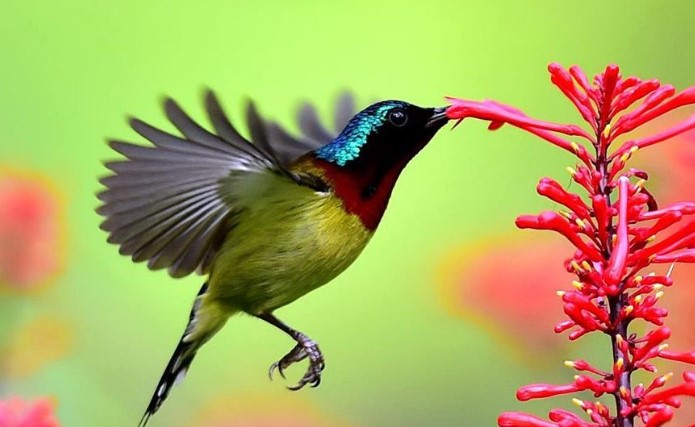
10. The Himalayan Monal:
A jewel of nature is uncovered by the majestic colors of the Himalayan Monal. A fantastic bird with striking plumage, the Himalayan Monal resides in the lofty Himalayas. Their long, elegant tails trail behind them as they roam alpine meadows, while their iridescent feathers come in shades of blue, green, and copper. As a symbol of beauty and symbolism, this bird is highly regarded in the region.
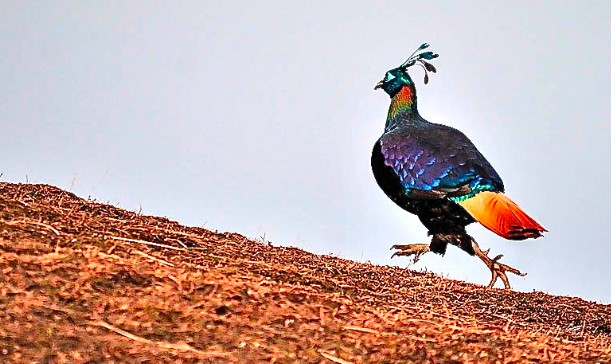
11. The Swallow-tailed Kite:
An aerial master, the Swallow-tailed kite is known for its prowess in the sky. Known for its graceful flight and striking appearance, the Swallow-tailed Kite is a raptor that prides itself on its graceful flight. Hunting for small prey this bird maneuvers effortlessly through the skies thanks to its elongated, deeply forked tail. As a symbol of elegance and agility, this kite originates from the Americas.
